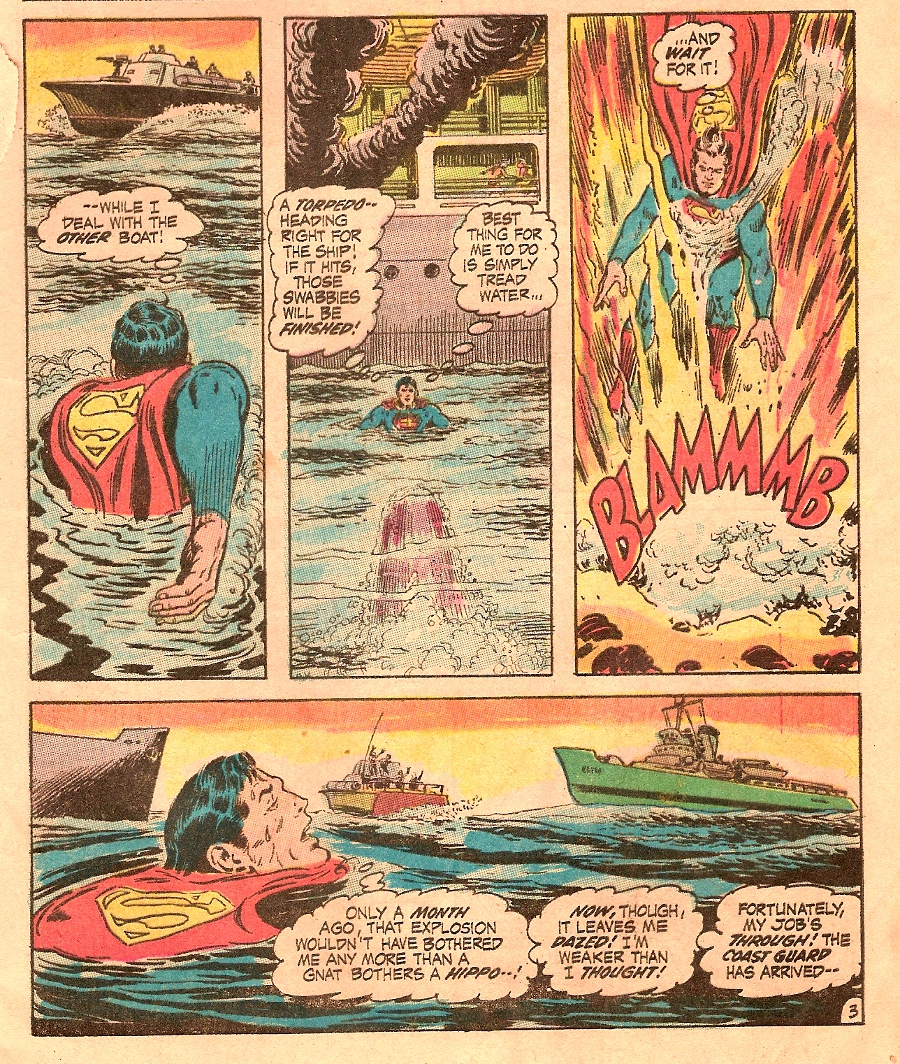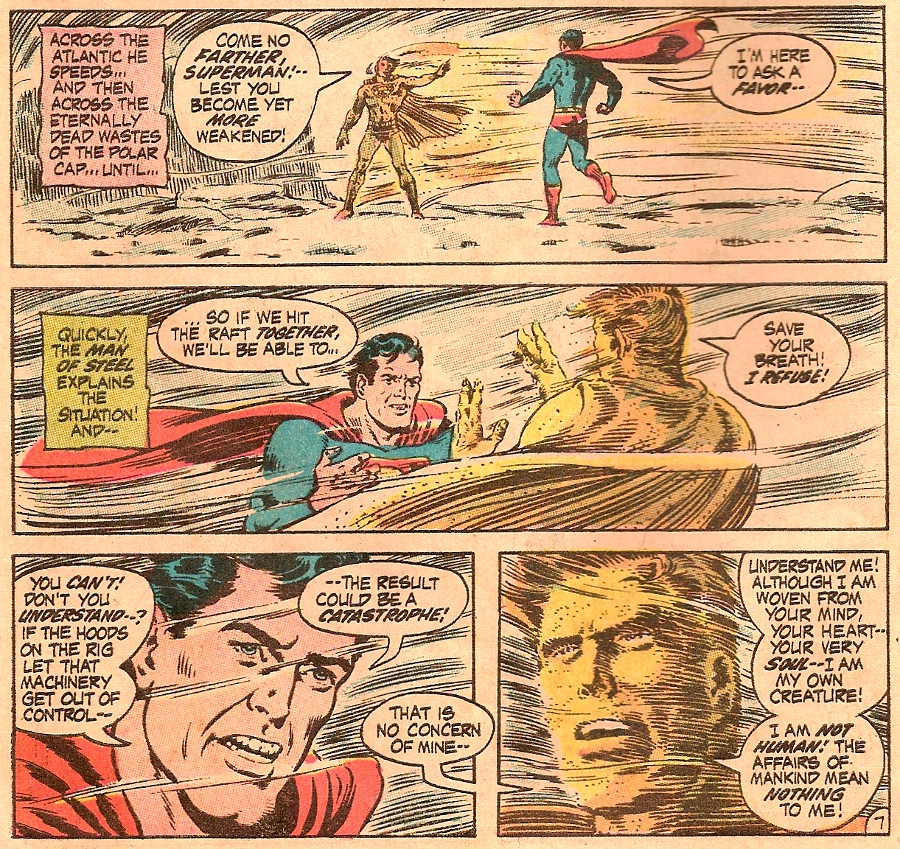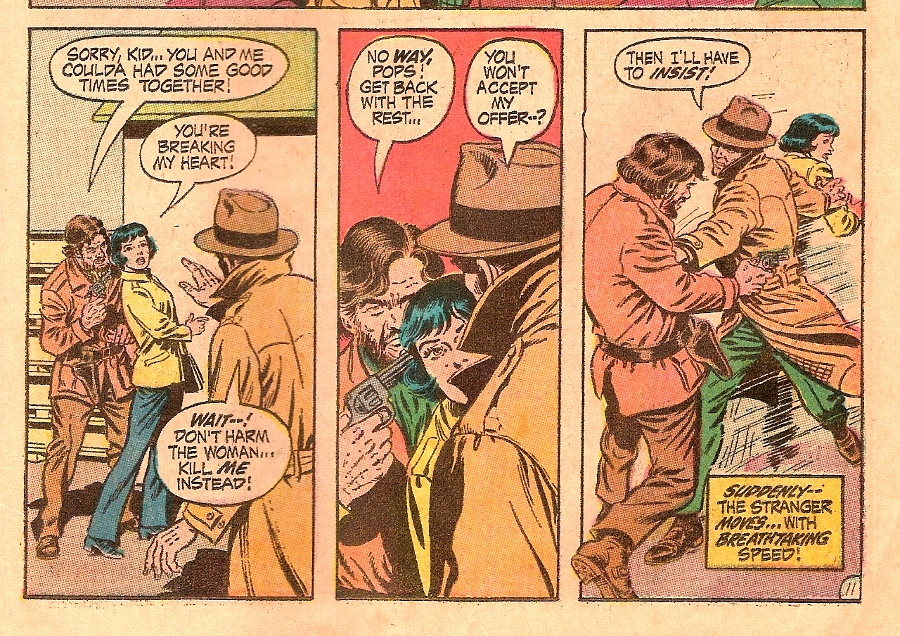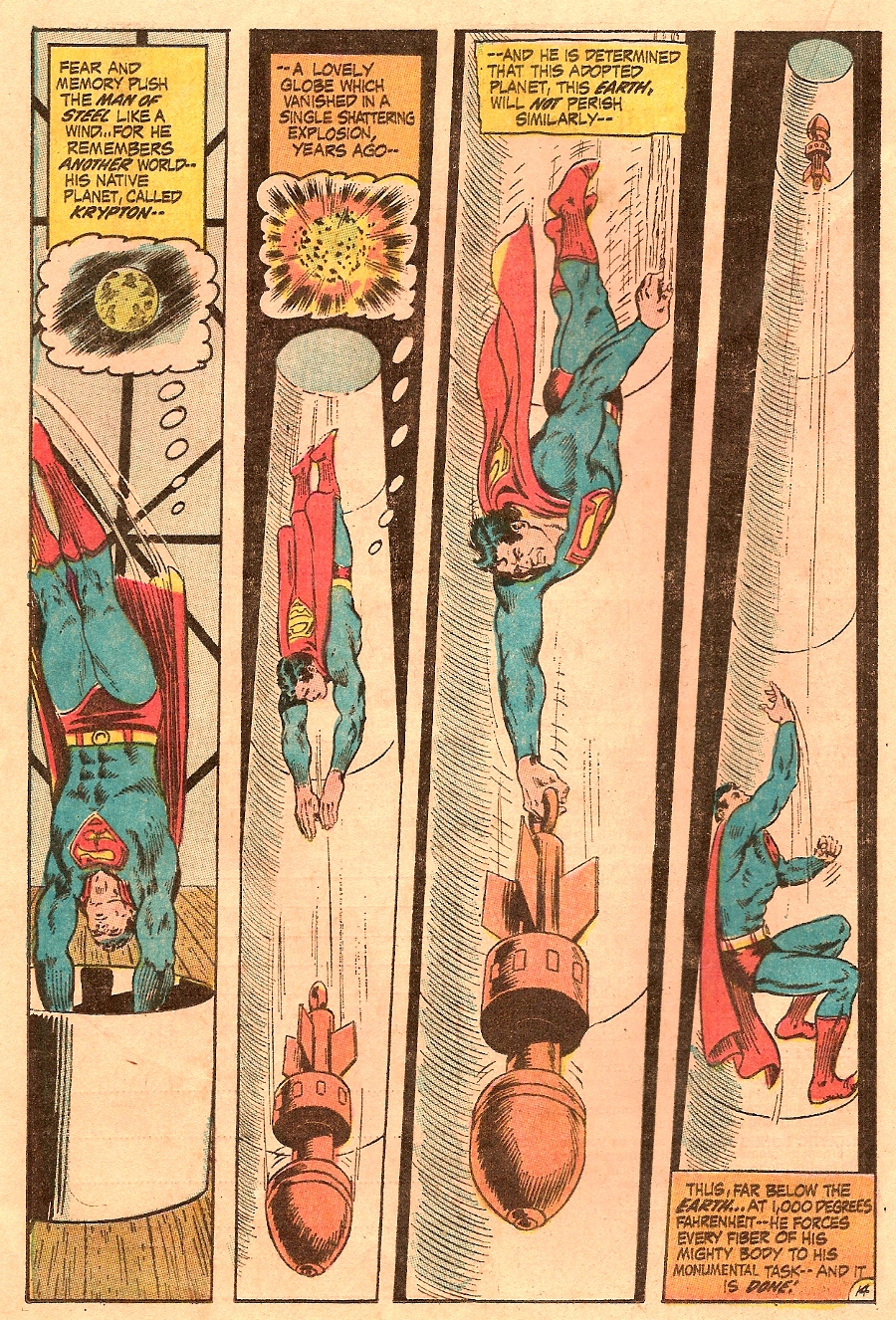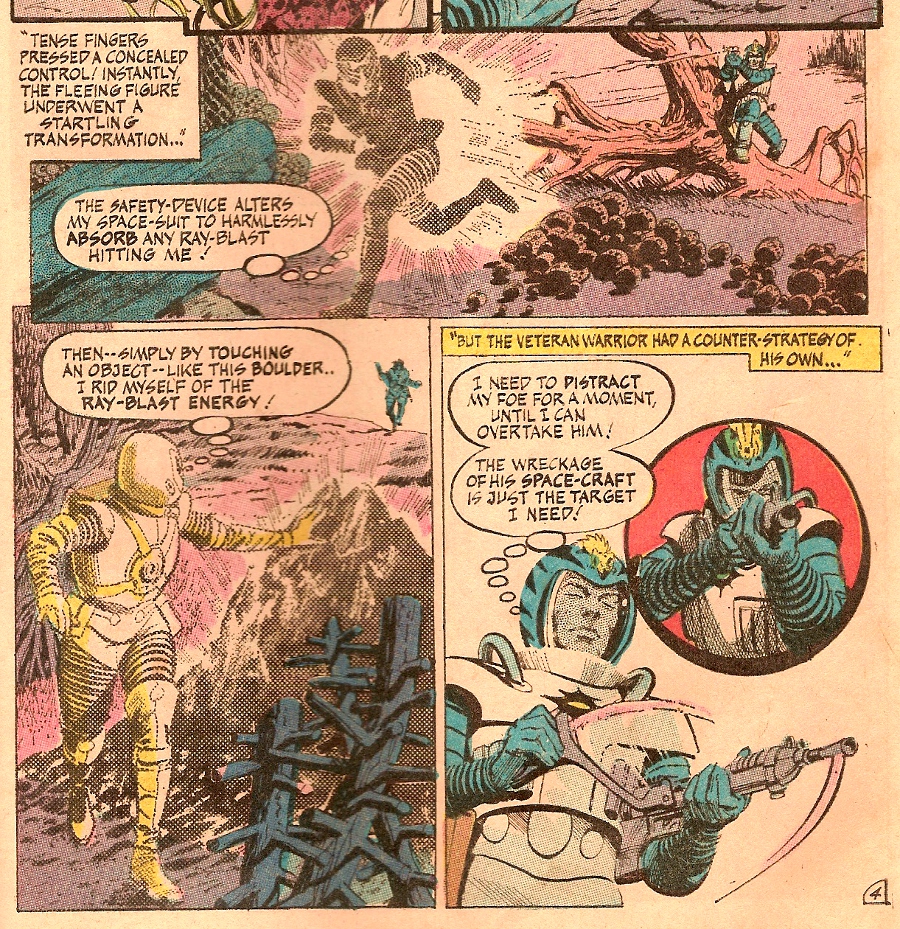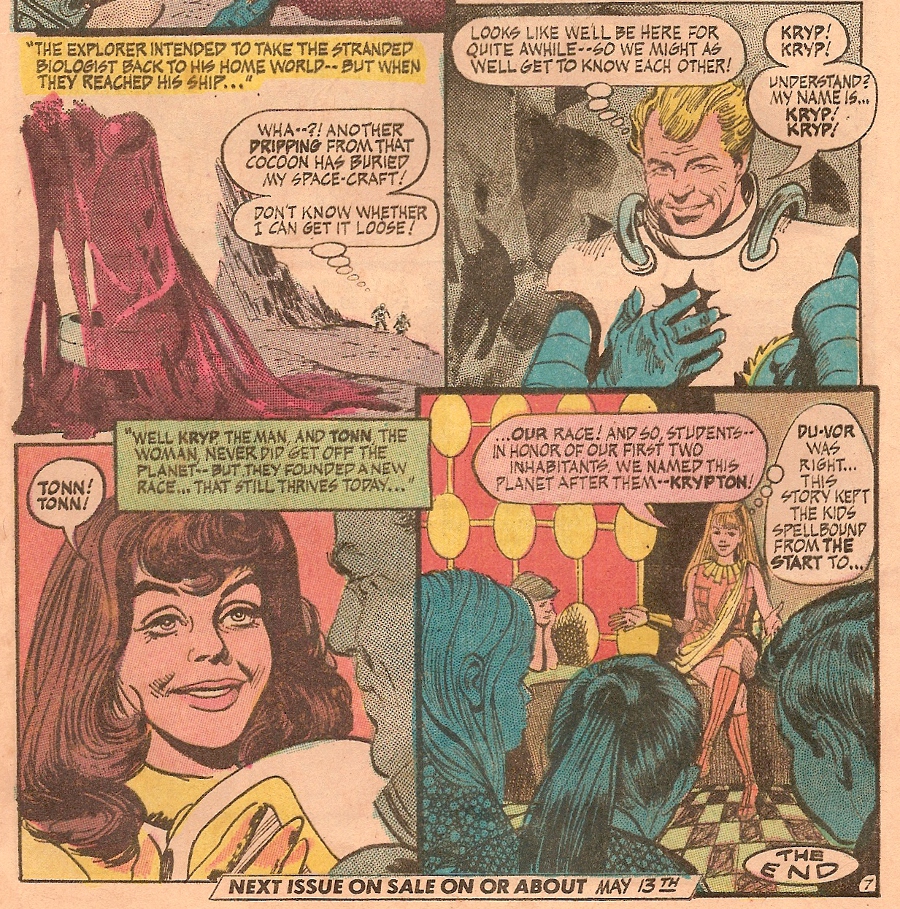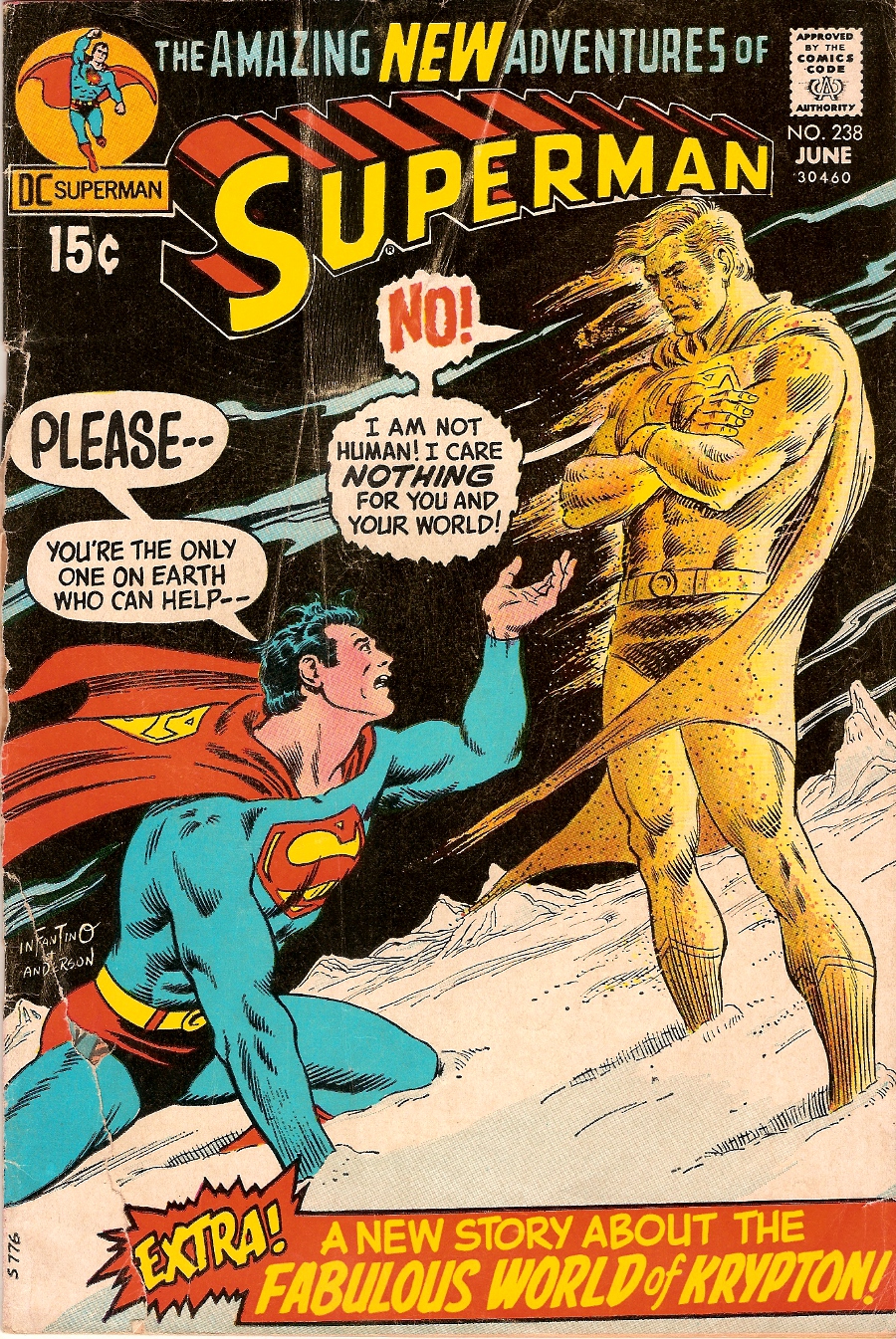 I had come up with a plan to turn March into a green month for St. Patrick’s Day by covering green heroes like Green Lantern, Green Arrow and the Hulk, but the G-H box is apparently still in the Vault, so no Hulk goodness today.
I had come up with a plan to turn March into a green month for St. Patrick’s Day by covering green heroes like Green Lantern, Green Arrow and the Hulk, but the G-H box is apparently still in the Vault, so no Hulk goodness today.
Instead, let’s take a week or three and look at some of the ways writers have tried to change Superman to make him less ridiculous and more interesting as a dramatic character. In 1986, John Byrne famously rebooted Superman’s continuity and changed his powers around in the process. He decided to make Superman weaker, able to be hurt, to make his stories more interesting than, “Hey, this month Superman’s fighting another guy that can’t hurt him in any way. Yawn.” He also decided to cast aside much of the Superman mythos crud that had accumulated over the years.
The thing is, Denny O’ Neil had done something similar over 15 years earlier. In 1970, Denny O’Neil took over the book with issue 233 (cover-dated January, 1971, so it would have hit the stands in November 1970 or thereabout), and the cover announced that this was the first issue of Superman’s new adventures.
So what changed? Well, Clark Kent got a new job, for one thing, leaving the Daily Planet to become a TV reporter for WGBS under Morgan Edge. And for another, all the Kryptonite on Earth was turned to iron, which was a total game-changer.
Because not only was Kryptonite the only substance that could reliably hurt Superman, but the 32 flavors of Kryptonite that writers had been coming up with since the 40’s served as very reliable story generators. Having trouble coming up with an idea? Hit Superman with Red Kryptonite and turn him into a gorilla. Problem solved.
It also seemed to be a move in the wrong direction, because without Kryptonite, it seemed that there was nothing anywhere that could challenge Superman. At least until the next issue, when it turned out that the incident that destroyed Superman’s weakness introduced a new, more serious one.
That weakness was an extradimensional visitor which absorbed a good deal of Superman’s powers and built himself a body out of sand that was a replica of Superman’s. With his powers drained by this unearthly visitor, suddenly Superman could no longer depend on his invulnerability, his heat vision, even his flying. Superman was still super, but no longer the godlike being he had been.
I bought the comic above when I was eight (15 cents, baby! Yeah, I know I say that every time, but that’s because it was only 15 cents!), 5 issues into O’Neil’s run. If you look closely at the spine, you’ll see that the cover is ripped. I don’t remember specifically when it happened, but I think it happened when I was putting the comic into a bag to protect it (ironic!). The cover caught on something, and the paper was so brittle that it tore like it was being unzipped.
If you’ve ever doubted Murphy Anderson’s mojo as an inker, notice that the penciller on the cover is Carmine Infantino. Seriously, Anderson could even make Infantino look good.
So anyway, in the story, titled “Menace at 1000 Degrees!” Superman gets a distress signal that a cargo ship is being attacked by torpedo boats, so he flies out to protect it. In the process, he is hit by a torpedo, and we see just how weak he is compared to the old Superman.
But that’s just the beginning of the danger. Because the torpedo boat attack was a diversion while the main gang attacked and took over a special deep drilling platform researching geothermal energy. Superman leaps out to investigate (because he can’t fly reliably anymore) and is hit with a stream of magma from a special cannon built into the rig. The magma halts his leap, and he falls into the ocean, where the magma cools into a stone covering that he barely breaks free of.
Superman realizes he might not be strong enough to take these guys on, so he goes to see the one guy who can help: Batman. No, actually, it never crosses his mind. He goes to see his sand doppelganger, who tells him to pound… you know.
That guy looks so cool, although he obviously absorbed more than just powers from Superman; he’s also a dick. I was so disappointed to find out that he’s only in the comic for these few panels. Anyway, Superman decides he’ll have to try to use strategy for once in his life. Meanwhile, the terrorists threaten to drop a big bomb down the magma shaft, which could supposedly cause earthquakes or even split the planet in two. Their demands: ten MILLION dollars in gold, plus 50 hostages and a hydrogen bomb.
The governments of the world decide to take the deal, sending ten million in bullion, 50 volunteer hostages and an H-Bomb. Among the hostages is Lois Lane, who grabs the leader’s gun and tries to rescue everyone, but ends up being talked out of it. The bad guy decides to kill her as an example to the others, but then…
Her rescuer is, of course, Superman, who makes short work of the thugs in close quarters, even managing to take out the magma cannon before it can hurt anybody. But then the leader drops the bomb down the magma shaft!
It’s a nice tense layout, but that bomb is clearly too long to be turned around in that narrow shaft the way Superman just did. Ah well, no use dwelling on continuity errors. The bomb explodes harmlessly in the sky, the bad guys are rounded up, and Superman is left to wonder how to deal with his new, less powerful existence.
The back-up feature in the issue is a “World of Krypton” story titled “A Name Is Born,” written by Cary Bates (who had been writing the main Superman stories right before O’Neil’s run started) and illustrated by Gray Morrow. A pretty young schoolteacher is riding around with an older, more experienced teacher and talking about how hard it is to control the kids in her classroom. So the old man says he’ll tell her a story that will “keep them spellbound.”
In the old, old days of Krypton, a visitor from space arrives to study the prehistoric planet to find someone else already there. The spacesuited alien offers the scientist a plant as a peace offering, only to have it grow wildly out of control once exposed to the planet’s atmosphere. The scientist believes he’s being attacked and shoots at the alien with his ray pistol.
I love the zip-a-tone negative effect Morrow used to show the energy absorption. Actually, I really like Morrow’s art throughout the story: solid figures, cool rendering effects, alien landscape with lots of detail.
The battle destroys the alien’s ship, but in the end, the alien saves the scientist from being killed by a strange, deadly plant, and they figure out that it was all a misunderstanding. So the scientist introduces himself.
Isn’t that sweet? To tell you the truth, eight-year-old me liked the back-up story better than the main feature. All that stuff with the weak hero nearly dying and second-guessing everything he does, along with nuclear terrorism and that creepy sand creature, wasn’t nearly as appealing as the story with the spaceships and the neat twist ending.
In the years that followed, I always wondered about the sand creature, because in this issue it seemed like a major deal, and yet I never saw it referenced in the comics again. I mean, they even brought Terra-Man the space cowboy back a few times, but the sand creature, nada. If I hadn’t kept the issue in question, I might have wondered if I hadn’t dreamed the whole thing.
So how long was it until the whole sand creature issue was resolved? Be here next week for the answer.


